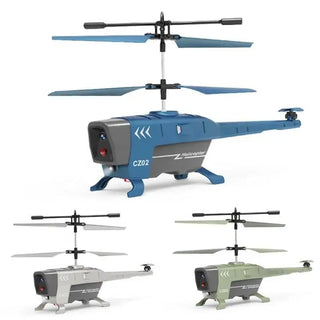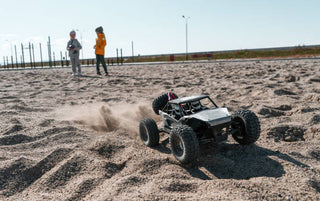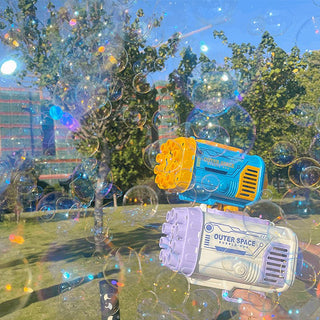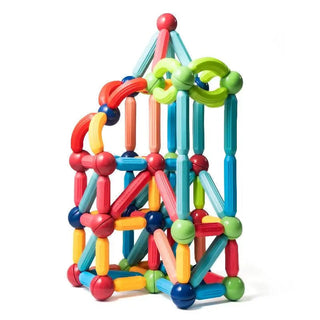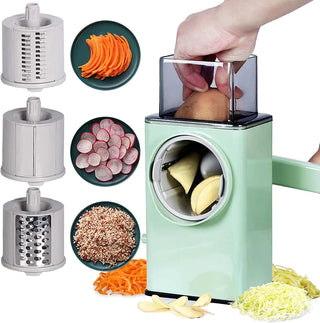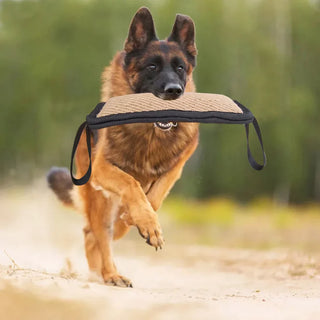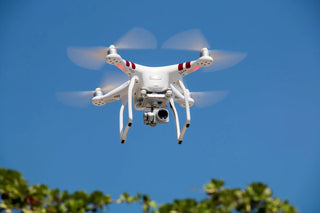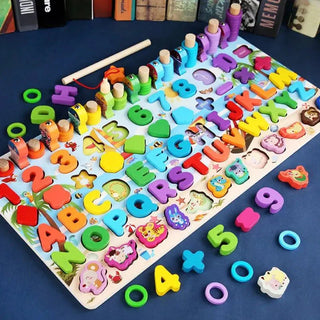So, you've got a drone, or you're thinking about getting one. That's awesome! Drones are super cool, but flying them isn't like riding a bike. There are rules, especially when it comes to licensing for drones. The FAA, which is the Federal Aviation Administration, sets all these rules to make sure everyone stays safe in the sky. This article is going to walk you through what you need to know about FAA regulations, from getting your drone registered to understanding the different types of licenses out there. We'll cover everything so you can fly your drone without any worries.
Key Takeaways
- Always check FAA rules before flying your drone to stay out of trouble.
- If you're flying for fun, you still need to register your drone if it's over a certain weight and get a TRUST certificate.
- For any kind of business use, you need a Part 107 license. This is a must.
- Getting your Part 107 license means passing an exam, so be ready to study up.
- There are costs involved with licensing for drones, like exam fees and renewal fees, so budget for those.
Understanding FAA Drone Regulations

Overview of FAA Drone Regulations
Flying a drone in the US comes with rules set by the FAA. They cover how heavy your drone can be, how high you can fly, and what areas you must avoid. You have to treat your drone like any other aircraft in some ways.
Knowing these points can save you fines or worse.
- Weight limit: drones under 55 pounds
- Altitude cap: 400 feet above ground
- Flight times: daylight only (with rare exceptions)
- Speed cap: 100 mph
- Airspace: stay out of controlled zones without permission
| Category | Weight | Max Altitude |
|---|---|---|
| Model Aircraft | < 0.55 lbs | 400 ft |
| Small UAV | 0.55–55 lbs | 400 ft |
| Large UAV | > 55 lbs | Special OK |
When you try to register on official sites, you might hit a block message. If that happens, check site access issues for tips.
Importance of Licensing for Drones
If you don’t have the right license, you’re basically flying with no ID. That’s bad news. A license proves you know the rules and can pilot safely. Commercial operators especially need Part 107. Without it, you risk fines, lawsuits, or losing your drone.
- Legal proof of skill
- Opens doors to paid jobs
- Offers insurance discounts
- Shows clients you’re legit
Staying Compliant with FAA Rules
Staying legal isn’t just about getting a license. You need to keep in line every time you fly.
- Check airspace status before takeoff (apps or maps help).
- Do a preflight check: batteries, rotors, GPS lock.
- Follow the 400-foot and line-of-sight rules.
- Log each flight in a notebook or app.
- Watch for NOTAMs or temporary flight restrictions.
Always review local notices in your flight area before powering up your drone.
Drone Registration Requirements
Mandatory Registration for Drones
So, you've got a drone, and you're itching to fly it. Before you launch, there's a good chance you'll need to register it with the Federal Aviation Administration (FAA). This isn't just a suggestion; it's a rule, and it applies to most drones, whether you're flying for fun or for work. The main thing that decides if you need to register is your drone's weight and what you plan to do with it. If your drone weighs more than 0.55 pounds (250 grams), which is about half a pound, you'll likely need to register it. This weight limit covers a lot of popular consumer drones out there. Even if you're just a hobbyist, that half-pound mark is important. For those using drones for commercial purposes, like taking photos for real estate or inspecting roofs, registration is always required, no matter how light the drone is. It's all about keeping the skies safe and making sure everyone knows who's flying what.
Process for FAA Drone Registration
Registering your drone with the FAA is pretty straightforward, thankfully. You do it online through their DroneZone website. It's designed to be a simple process, so you don't need to be a tech wizard to figure it out. Here's what you'll generally need to do:
- Go to the FAA DroneZone website.
- Create an account if you don't already have one.
- Choose whether you're registering as a recreational flyer or a commercial operator (Part 107).
- Provide some basic information about yourself and your drone.
- Pay the small registration fee, which is usually around $5.
- Once registered, you'll get a unique FAA registration number. This number needs to be clearly displayed on your drone. A permanent marker or a label works just fine. The idea is that if someone finds your drone, or if there's an incident, they can easily identify the owner. It's a quick process that helps keep things organized in the airspace.
Consequences of Non-Registration
Ignoring the FAA's registration rules can lead to some pretty serious problems. It's not just a slap on the wrist; the penalties can be quite severe. If you're caught flying an unregistered drone when it should be registered, you could face significant fines. We're talking about civil penalties that can go up to $27,500, and in some really bad cases, criminal penalties that could reach $250,000 and even jail time. Nobody wants that kind of trouble. Beyond the legal stuff, flying unregistered means you're not part of the system, which can make things complicated if there's an accident or if your drone causes any issues. It's much better to spend a few minutes and a few dollars to get it registered and fly with peace of mind. It's a small step that prevents a lot of potential headaches down the road. Understanding FAA Drone Regulations is key to avoiding these issues.
Recreational Drone Flying Rules
Defining Recreational Use
When we talk about recreational drone flying, we're really just talking about flying for fun. This means you're not getting paid for it, and you're not using your drone to help with any kind of business or service. Think of it like flying a model airplane or a kite; it's purely for your own enjoyment. Whether you're capturing cool videos of your neighborhood, practicing your piloting skills, or just enjoying the view from above, if there's no money changing hands, it's recreational. The FAA has a clear line between hobby flying and commercial operations, and understanding this difference is the first step to staying out of trouble. It's all about personal leisure, not professional gain.
TRUST Certificate for Hobbyists
If you're flying your drone just for fun, you'll need to get something called the TRUST certificate. It stands for The Recreational UAS Safety Test. It's not a license, but it's a mandatory online test that covers basic safety rules and regulations for recreational drone pilots. It's pretty straightforward, and you can take it online through various FAA-approved organizations. The test makes sure you know things like:
- Where you can and can't fly your drone.
- How to keep your drone in sight.
- What to do if you lose control.
- Respecting other people's privacy.
Once you pass, you get a certificate that doesn't expire. It's a simple way to show you understand the rules and are committed to flying safely. You don't need to carry a physical card, but you should be able to produce proof of your certificate if asked by law enforcement or the FAA. It's a small step that makes a big difference in keeping our skies safe for everyone.
Taking the TRUST test is a quick and easy way to make sure you're flying responsibly. It's designed to educate, not to trip you up, and it helps ensure that recreational drone pilots understand their role in maintaining airspace safety. It's a foundational piece of knowledge for anyone who wants to enjoy their drone without causing issues.
Limitations for Recreational Pilots
Even though you're flying for fun, there are still some important rules you need to follow. These limitations are in place to keep everyone safe, both in the air and on the ground. Here are some key things to remember:
- Always fly within visual line of sight: This means you need to be able to see your drone with your own eyes at all times, without binoculars or other aids. This helps you avoid collisions and stay aware of your surroundings.
- Do not fly in controlled airspace without authorization: Many areas around airports are controlled airspace. You need to get permission before flying there. There are apps and websites that can help you figure out if you're in controlled airspace and how to request authorization.
- Do not fly higher than 400 feet above ground level: This is a general ceiling for recreational flights. Going higher can put you in the path of manned aircraft.
- Do not interfere with manned aircraft: If you see a plane or helicopter, you must yield the right of way. Your drone should never pose a hazard to other aircraft.
- Do not fly over people or moving vehicles: Unless you're flying over people who are part of your operation and are protected, or over vehicles that are stationary and you have permission, avoid flying directly over them. This is a safety measure to prevent injury or damage.
- Do not fly under the influence of alcohol or drugs: Just like driving a car, operating a drone requires your full attention and clear judgment. Safe drone operation is paramount.
Following these rules isn't just about avoiding fines; it's about being a responsible pilot and ensuring that drones continue to be a fun and accessible hobby for everyone.
Commercial Drone Operations: Part 107
Purpose of Part 107 Certification
Becoming a Part 107 remote pilot shows the FAA you know how to fly drones safely in a work setting. It’s more than a piece of paper—it’s proof you’ve studied airspace rules and safety guidelines.
- Use your drone for paid gigs like roof inspections, real estate photos, or surveying.
- Fly in controlled airspace around airports (with permission).
- Operate under low-light or complex site conditions once you’ve learned the ropes.
Getting the Part 107 certificate opens doors to real work. Without it, you’re stuck flying only for fun.
Eligibility for Commercial Licensing for Drones
To qualify for a Part 107 remote pilot certificate, you must meet a few simple checks:
- Be at least 16 years old.
- Be able to read, speak, write and understand English.
- Pass a Transportation Security Administration (TSA) background check.
- Score at least 70% on the FAA Part 107 knowledge exam.
Once you clear those, the FAA issues your certificate, and you’re set to fly commercially.
Benefits of a Commercial Drone License
With Part 107, you can get paid for your drone skills and tackle bigger jobs. Here’s what you gain:
| Privilege | Details |
|---|---|
| Altitude Limit | Up to 400 ft above ground level |
| Aircraft Weight | Up to 55 lbs total |
| Flight Speed | 100 mph (87 knots) |
| Controlled Airspace | Allowed with clearance |
• Charge professional rates for photo/video work or inspections
• Bid on contracts for roof checks, agricultural surveys, and more
• Show clients you follow FAA rules, which builds trust
• Replace broken parts easily by ordering from a reliable Shopify store
Remember, flying commercially without this license can lead to big fines or grounding of your drone.
Obtaining Your Part 107 Drone License
Steps to FAA Certification
Getting your Part 107 drone license isn't as complicated as it might seem, but it does require a structured approach. The main goal is to pass the FAA Aeronautical Knowledge Test for Small Unmanned Aircraft Systems. This test covers a lot of ground, from airspace classifications to weather effects on drone flight. Once you pass, you'll apply for your certificate through the FAA's Integrated Airman Certification and Rating Application (IACRA) system. After that, you'll need to validate your identity with an FAA-authorized representative, like a Flight Instructor or an Airman Certification Representative. It's a process, but each step is pretty clear.
Preparing for the Part 107 Exam
Preparing for the Part 107 exam is where most of the work happens. You can study on your own, using FAA resources like the Remote Pilot – Small Unmanned Aircraft Systems Airman Certification Standards (ACS) and various advisory circulars. However, many people find success with dedicated online courses or ground schools. These programs often break down the complex topics into digestible lessons and provide practice tests. Think about how you learn best. Do you prefer self-study with books, or do you need the structure of a course? Either way, consistent study is key.
It's not just about memorizing answers; it's about understanding the principles behind safe drone operation. This knowledge will serve you well beyond the exam, helping you make good decisions in real-world flying situations. A solid grasp of the material means you're not just passing a test, but becoming a responsible pilot.
Here are some common topics covered on the exam:
- Airspace classifications and operational requirements
- Weather and its effects on small unmanned aircraft
- Loading and performance of small unmanned aircraft
- Emergency procedures
- Aeronautical decision-making and judgment
- Airport operations
- Maintenance and preflight inspection procedures
Timeline for Licensing for Drones
The timeline for getting your Part 107 certification can vary quite a bit, depending on how much time you can dedicate to studying and how quickly you can schedule your exam. Generally, most people take anywhere from a few weeks to a couple of months to prepare. The exam itself is a one-time event, usually lasting about two hours. After passing, the application and identity verification process can take another few weeks for the FAA to process and mail your physical certificate. So, from start to finish, you're probably looking at a total of one to three months, assuming you're consistent with your efforts.
Here's a rough breakdown of the timeline:
| Activity | Estimated Time |
|---|---|
| Study for Exam | 2-8 Weeks |
| Schedule & Take Exam | 1-2 Weeks |
| FAA Application & Processing | 2-4 Weeks |
| Receive Certificate | 1-2 Weeks |
Remember, this is just an estimate. Life happens, and sometimes things take longer than planned. The important thing is to keep moving forward.
Costs Associated with Drone Licensing

Getting your drone license isn't just about passing a test; there are some financial bits to consider too. It's not a huge investment, but knowing what to expect helps you budget properly. Think of it as setting yourself up for success in the drone world.
Exam Fees for Part 107
When you're ready to take the Part 107 Aeronautical Knowledge Test, you'll need to pay an exam fee. This fee is paid directly to the testing center where you schedule your exam. It's a pretty standard cost across the board, so you won't find much variation there. This is usually the biggest single cost directly related to getting the license itself.
| Item | Cost (Approx.) |
|---|---|
| Part 107 Exam Fee | $175 |
Renewal Costs for Drone Licenses
Your Part 107 certificate isn't a one-and-done deal. You'll need to renew it periodically to keep it current. The good news is, the renewal process is generally less expensive than the initial certification. It usually involves taking an online recurrent training course provided by the FAA, which is free. However, if the rules change significantly, or if you prefer, you might opt for a paid refresher course or even retake the exam if you feel rusty. The main thing is staying up-to-date with the regulations.
While the FAA doesn't charge for the recurrent online training, it's smart to factor in time for studying and staying current. The drone world changes fast, and keeping your knowledge sharp is just as important as the physical license itself. Don't let your understanding of the rules get stale.
Additional Expenses for Training
While the FAA provides free study materials, many people choose to invest in additional training resources to prepare for the Part 107 exam. These can vary widely in cost and format. Some folks just grab a cheap app, while others go for full-blown online courses. It really depends on your learning style and how much support you feel you need.
- Online Courses: These can range from $100 to $500 or more, offering structured lessons, practice tests, and sometimes even instructor support. They're great if you like a guided approach.
- Study Guides/Books: You can find these for $20-$50. They're good for self-starters who prefer reading and working through problems at their own pace.
- Practice Test Apps: Many apps offer practice questions for $5-$20. These are handy for quick reviews and testing your knowledge on the go.
- Drone Registration: Don't forget the small fee to register your drone with the FAA. It's usually around $5 for three years, and it's mandatory for commercial operations. You can handle this on the FAA's DroneZone website. This is a separate cost from your Part 107 certification.
So, while the exam fee is fixed, the total cost can fluctuate based on how you choose to prepare and what other operational expenses you might incur, like drone registration.
Thinking about flying a drone for work? You'll need a license, and that costs money. Things like the test fee, study materials, and maybe even special insurance add up. Want to know exactly what you'll pay? Head over to our website for a full breakdown of all the costs involved in getting your drone license.
Wrapping Things Up
So, there you have it. Getting a handle on drone rules might seem like a lot at first, but it's really about keeping everyone safe in the air. Whether you're just flying for fun or you're looking to make some money with your drone, knowing these rules is a big deal. It helps you avoid trouble and makes sure you're flying the right way. So, take what you've learned here, and go fly your drone with confidence. Just remember to always check for updates, because these things can change. Happy flying!
Frequently Asked Questions
Why is it important to get a drone license?
Getting a drone license is super important if you plan to use your drone for work or business, like taking photos for real estate or checking out construction sites. It shows you know the rules and can fly safely. If you're just flying for fun, you might not need a full license, but you still have to follow some basic rules.
What's the difference between flying a drone for fun and flying it for work?
The main difference is why you're flying. If you're flying just for fun, that's recreational. If you're getting paid or doing it for your job, that's commercial, and you'll need a special license called a Part 107 certificate.
Do all drones need to be registered?
Yes, most drones need to be registered with the FAA, whether you're flying for fun or for work. It's like registering a car; it helps the FAA keep track of drones and makes sure everyone is flying safely.
What is the TRUST certificate, and how is it different from a Part 107 license?
The TRUST certificate is for people who fly drones just for fun. It's a short online course that teaches you important safety rules. A Part 107 license is much more involved and is required if you want to use your drone for any kind of business or paid work.
What do I need to do to get a Part 107 drone license?
To get your Part 107 license, you need to be at least 16 years old, be able to read, speak, and understand English, and pass a special FAA test about flying drones safely and legally.
How much does it cost to get and keep a drone license?
The cost can change, but generally, you'll pay a fee to take the Part 107 test. There might also be costs for study materials or training courses if you choose to take them. You'll also need to renew your license every couple of years, which has a small fee too.

